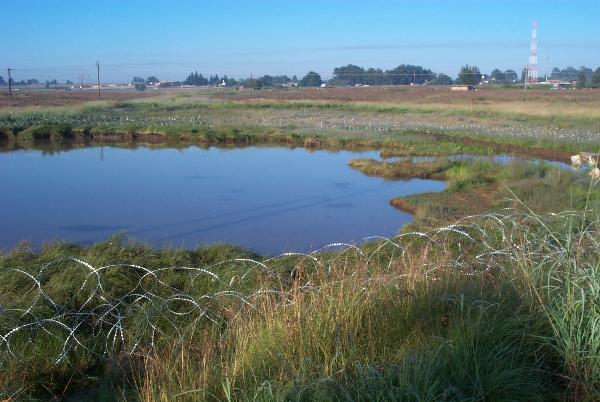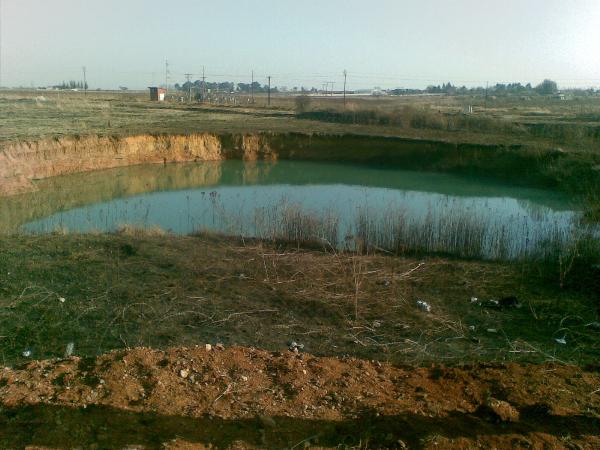Please note!!!!!!!
EXERCISE EXTREME CAUTION AT ALL TIMES
WHEN NEAR THE SINKHOLES
Babsfontein Sinkhole
There are several sinkholes in the Babsfontein
area and the listed waypoint will take you to one that is well
known next to the road which is now being closed off to traffic.
This Sinkhole was discovered in January 2004. This Sinkhole was
formed due to the lowering of groundwater levels and caused a loss
of support for the soft material in the rock spaces. Today this
sinkhole is holding water due to the soft soil that gradually caved
into the hole, which blocked the drain hole.
There is another Sinkhole at S25 59.904 E028
25.708, but please note the following for safety reasons; this
second sinkhole is located near a informal settlement and the soil
and surrounding area are very unstable, but will provide a good
view of the inside and cave-ins of the surrounded areas.
 |
 |
 |
| Babsfontein Sinkhole Feb 2004 |
Babsfontein Sinkhole Mar 2004 |
Babsfontein Sinkhole Aug 2008 |
What is a sinkhole?
A sinkhole is a natural depression or hole in the
surface caused by the removal of soil or bedrock, often both, by
water. Sinkholes may vary in size from less than a meter to several
hundred meters both in diameter and depth, and vary in form from
soil-lined bowls to bedrock-edged chasms. They may be formed
gradually or suddenly, and are found worldwide. These features are
also common around Johannesburg and Pretoria that is underlined by
dolomite.
Sinkholes are all about water.
- Water dissolved minerals in the rock, leaving residue and open
spaces within the rock. (This is called
“weathering”.)
- Water washes away the soil and residue from the voids in the
rock.
- Lowering of groundwater levels can cause a loss of support for
the soft material in the rock spaces that can lead to
collapse.
- Changing groundwater gradients (due to removing or introducing
water to the system) can cause loose material to flush out quicker
from the voids and the surface to collapse in response.
- Any change to the hydrologic system (putting more water in or
taking it out) causes the system to become at least temporarily
unstable and can lead to sinkholes.
- Sinkholes can result from seasonal changes in the groundwater
table, freeze and thaw of the ground, and extremes in precipitation
(drought versus heavy rain).
Typical activities that can lead to sinkholes
are:
- Decline of water levels – drought, groundwater pumping
(wells, quarries, mines)
- Disturbance of the soil - digging through soil layers,
soil removal, drilling
- Point-source of water – leaking water/sewer pipes,
injection of water
- Concentration of water flow – storm water drains, floods,
etc.
- Water impoundments – basins, ponds, dams
- Heavy loads on the surface – structures, equipment
- Vibration – traffic, blasting or drilling
To get credit for the find, answer the following
questions in a mail to the cache owner (No need to cross the fence.
The sinkhole can be observed from the roadside.):
- Estimate how wide is the sinkhole in
meters?
- Estimate the distance from the water level to
the top edge of the sinkhole?
- What methods were done on site to prevent
passersby to disappear down this sinkhole?
Please note!!!!!!!
EXERCISE EXTREME CAUTION AT ALL TIMES
WHEN NEAR THE SINKHOLES